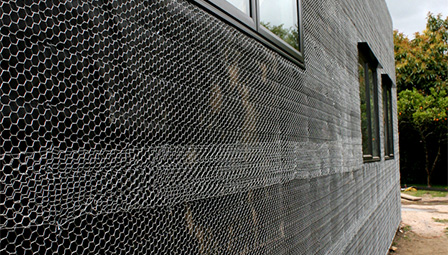Building a Six-Foot Tall Garden Fence for Privacy and Security
Dic . 22, 2024 17:47
Building a 6-Foot Garden Fence A Comprehensive Guide
Creating an outdoor sanctuary where both plants and people can thrive is a primary goal for many garden enthusiasts. One essential aspect of achieving this is establishing a garden fence that not only defines the space but also provides protection from intruders (both human and animal) while maintaining an aesthetic appeal. A 6-foot garden fence is a popular choice for both functionality and style. This article will explore the various elements of building a 6-foot garden fence, covering materials, design considerations, construction tips, and maintenance.
Choosing the Right Material
The first step in constructing a 6-foot garden fence is selecting the appropriate material. There are several options to consider, including wood, vinyl, chain link, and metal.
- Wood A classic choice, wooden fences offer natural beauty and can blend seamlessly with the surrounding landscape. Cedar and redwood are popular due to their durability and resistance to rot. However, wooden fences do require regular maintenance, including staining or sealing.
- Vinyl For those seeking a low-maintenance option, vinyl fencing is an excellent choice. It is available in numerous styles and colors, is resistant to weather and pests, and does not need painting or staining.
- Chain Link This fencing option offers a cost-effective solution but lacks privacy. Chain link fences can be enhanced with privacy slats or climbing plants to create a more aesthetically pleasing environment.
- Metal Wrought iron or aluminum fences are sturdy and can be very beautiful, offering both security and style. These fences can be more expensive, but they tend to last a long time with minimal maintenance.
Design Considerations
Before constructing a fence, it is essential to consider the design and purpose of the fence
1. Aesthetic Appeal The fence should complement the overall design of your garden and home. Whether you opt for a rustic picket fence, a modern horizontal plank design, or a classic plantation fence, consider how the style fits with your existing landscape.
2. Functionality Determine the primary purpose of the fence. Is it to keep animals out, provide privacy, or simply create a boundary? Knowing the purpose will guide decisions on height, material, and design.
3. Local Regulations Check local building codes and HOA regulations before beginning the construction. Some areas may have restrictions regarding the height and type of fencing allowed.
6 foot garden fence

Construction Tips
Building a 6-foot garden fence requires careful planning and execution. Here are some key steps in the construction process
1. Planning and Layout Before any digging begins, mark the layout of the fence using stakes and twine. Take accurate measurements and ensure the corners are square.
2. Post Installation For a sturdy fence, consider using 4x4 inch wooden or metal posts set into the ground at least 2 feet deep, depending on the frost line in your area. Use concrete for added stability.
3. Panel Assembly Depending on your design, attach the panels to the posts. If you’re using wood, pre-drilling holes will help prevent splitting. Ensure that each panel is level and securely fastened.
4. Finishing Touches After the main structure is in place, add any finishing touches like paint, stain, or protective sealants. This not only enhances the appearance but also prolongs the life of the materials used.
Maintenance
To ensure the longevity of your 6-foot garden fence, regular maintenance is crucial
- Wooden Fences Inspect for rot, warping, or insect damage, and replace any damaged boards. Reapply stain or sealant every few years.
- Vinyl Fences Clean with soap and water to remove dirt and stains. Inspect for cracks periodically that may arise from harsh weather.
- Metal Fences Check for rust or corrosion, especially at welds and joints. Applying a rust-inhibitor can prolong the lifespan of metal fences.
Conclusion
A 6-foot garden fence can serve as an essential element of your outdoor space, providing security, boundaries, and aesthetic appeal. By selecting the right materials, considering design options, following construction best practices, and committing to regular upkeep, you can create a beautiful and functional garden fence that enhances your outdoor experience for years to come. Whether you're a seasoned gardener or a novice, the joy of tending to your plants while being enclosed in a beautiful fenced area offers a unique sense of peace and satisfaction.




















